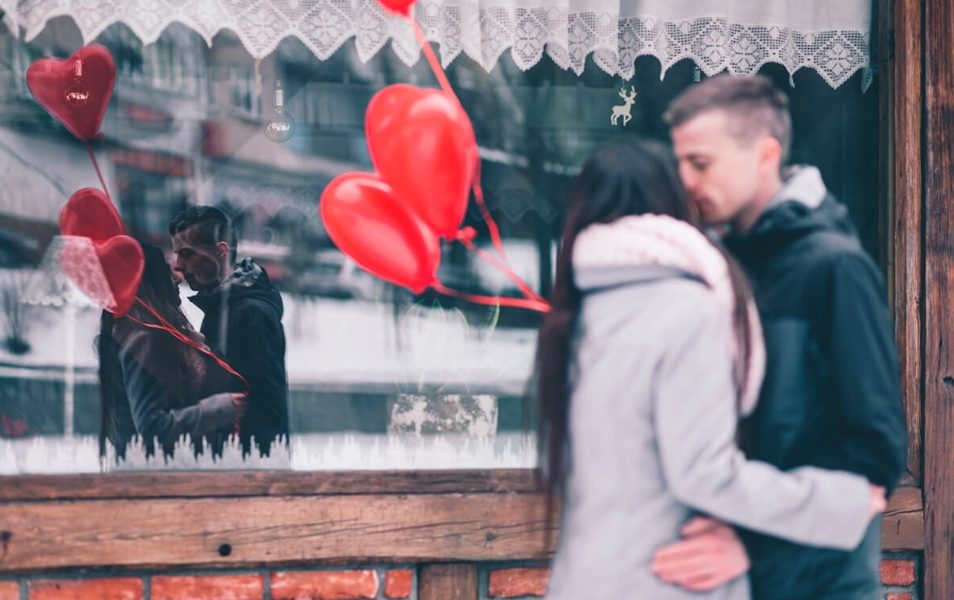Valentine’s is an exceptional day for lovers, friends, and family. It is a day filled with joy, romance, events, dates, and gifts to make it extra special.
But what is more fascinating is that this day is celebrated differently worldwide. Different countries have their unique way of marking this day.
So how do other countries mark Valentine’s apart from yours?
In this piece, we will go through how various countries celebrate Valentine’s Day and what is so special about it.
How Other Countries Celebrate Valentine’s Day
Follow us on an enthralling trip worldwide as we explore how different countries commemorate Valentine’s Day in unique, magical ways.
This section will highlight how love is expressed— grand romantic gestures or time-honored traditions steeped in history; these expressions occur worldwide.
1. United States: Grand Gestures and Elaborate Gifts
In the United States, Valentine’s Day is an impressive spectacle of over-the-top romantic gestures and the exchange of elaborate gifts.
This is not just another customary love celebration, as couples from all over the country do their best to create a scenario that no one can ever forget.
Americans celebrate Valentine’s Day with all kinds of expressions of love, from quiet dinners at home to elaborate motives ranging from surprise weekend getaways in romantic destinations to large-scale flash mobs staged as the public professes on behalf of lovers.
The tradition reflects a cultural inclination towards celebrating love in an outspoken and demonstrative way, promoting the liveliness of Valentine’s Day merriments throughout the country.
It is not only about the celebration of love itself but also the creativity and hardships necessary to make this day truly unforgettable.
2. Canada: Multicultural Celebrations
An alternative beauty associated with Valentine’s Day in Canada represents this country’s cultural diversity.
Canadians are one of the most multicultural societies on earth, with a population that proudly showcases its ethnic diversity and incorporates it into its romantic celebrations.
The day is transformed into a beautiful voyage of different cultural variations on love, with lovers tasting various foods and participating in diverse rituals.
The celebration is not limited to romantic gestures; it combines many cultural influences into a harmonious tribute to love.
This multicultural approach best describes the richness of the Valentine’s Day experience and the demonstration of Canada as an inclusive country.
3. Australia: Outdoor Romantic Adventures
It takes on an outdoorsy flavor in Australia – after all, the nation loves adventure and spectacular natural sceneries.
Often, couples take romantic trips that celebrate the large and varied power of the continent.
This celebration is characterized by picture-perfect beach picnics, intimate hikes through beautiful landscapes, and evenings spent stargazing with the open sky of the Southern Hemisphere.
The warm weather and picture-perfect scenery make the ideal setting for couples to connect, helping them become as wide open and endless as Australia. Valentine‘s Day is a celebration that captures an Australian way’s adventurous, free-spirited lifestyle.
4. Germany: The Pig Charm and Heart-Shaped Gifts
In Germany, the annual celebrations of love on Valentine’s Day take a peculiar course, introducing such traditions as giving pig charms and heart-shaped sweets.
Traditionally associated with luck and prosperity, the pig holds a prominent position as an enjoyable token of love.
This delightful custom is accompanied by market saturation with shaped-on-heart gifts, from tasty chocolates to complicated ornaments.
The German celebration contributes in a unique and sentimental tone to the otherwise universal celebration of love, highlighting cultural meanings not just on what is symbolic about gifts but also that the act has an element of thoughtfulness.
This is a celebration that beautifully fuses tradition with modern renditions of love.
5. Mexico: The Day of Love and Friendship
However, Valentine’s Day goes beyond the notion of romantic love in Mexico, where it becomes a public holiday called “Day of Love and Friendship.” 14 February turns into a day to celebrate romantic relationships, spiritual connections, and friendships.
The celebration is not contained in the boundaries of couples, as friends celebrate by giving gifts and signs of affection.
The focus on developing positive and productive relationships further distinguishes Mexican Valentine’s Day by its inclusive nature.
Cultural weight is attached to the acknowledgment and praise of various bonds that overcome males’ and females’ lives, emotional and non-romantic; it is also related to issues deeply grounded in Mexican culture, like friendship or love.
6. India: Bollywood-Inspired Love
Bollywood movies are probably India’s grandest spectacle, and Valentine’s Day is unmistakably associated with them.
Here, the beauty of love is vividly reflected through stunning stories on a silver screen.
Couples experience the wonder of Bollywood, borrowing ideas from memorable movie moments where grand romantic gestures and inspiring serenades played out.
Day becomes a tribute to corny imitation as people all over the city recreate cinematic moments.
Occasionally, they go even further by creating large-scale flash mobs featuring Bollywood-style dance routines in different public spaces.
If Bollywood did not lend some glamor and drama, Valentine’s Day in India would never be a dreamy, fairytale-ish day.
7. Sweden: Valentine’s Day as ‘Day of All Hearts’
In the peaceful views of Sweden, Valentine’s Day becomes a unique celebration titled ‘Alla hjärtans dag ’ or the ‘Day of All Hearts.’
It deviates from that customary spotlight on romantic affection, justifying its celebrations encompassing all types of love – friendships and familial connections aside.
The true spirit of the day is to celebrate and give love in all its different guises, which renders Valentine’s Day a rounded celebration that captures every aspect of affection.
This is just how wonderfully beautiful and open-hearted the nature of the Swedish approach to love is represented in such holidays, for instance, ‘Day most hearts are there.’ It means that all real connections between people are meaningful and valued here.
8. Netherlands: Anonymous Valentines
Valentine’s Day bears a sense of mystique and adventure in the Netherlands due to one specific practice – mailing anonymous Valentine’s cards.
People from couples to secret admirers participate in this gentle and playful tradition that helps people communicate their affections without revealing who they are.
Sending anonymous Valentine’s adds a touch of excitement and mystery to the holiday, as correspondents set out on an enjoyable quest to guess who has sent this message.
Valentine’s Day is flipped into a fun race to discover clandestine affections with this Dutch practice; the day becomes full of amazement and romantic suspense.
9. Turkey: Romantic Getaways and Love Tokens
In the culturally diverse environment of Turkey, Valentine’s Day unfolds as a season for romantic holidays and the distribution of symbolic tokens of love.
Couples frequently flee to idyllic escapes, creating lasting memories under beautiful scenery.
The return of the love tokens becomes a precious ritual, from highly elaborate jewelry to simple souvenirs that signify their feelings for each other.
The celebration of this Turkish tradition is deeply rooted in an appreciation for the romantic aspects of life and a longing to cultivate meaningful moments that deepen spousal bonds and add threads to the fabric of shared memories.
10. South Africa: Public Declarations of Love
Valentine’s Day, in the lively background of South Africa, has a distinctive and daring character of presentation.
Notably, women engage in the tradition of wearing their hearts on their sleeves. On this day, one also finds women pinning the names of their loves on tops of shirts and openly declaring love.
The bold and public declarations of love that Valentine’s Day brings to South Africa add an air of spontaneity and openness.
The tradition makes the day a communal celebration of romantic notions that washes over the entire community, creating an environment where love is celebrated with private parties and open sharing between friends and neighbors.
11. Ireland: The St. Valentine’s Pilgrimage
Ireland is a great country that also celebrates Valentine’s Day in its unique fashion.
Chester and his staff, who also have time off during this period, also attend to visit mPilsler’s cats on February 14th, thus going through something similar but more hearted than usual.”
This is because, in Whitefriar Street Carmelite Church in Dublin, the relics of St. Valentine are enshrined, attracting couples and hopeful romantics to visit at all times.
They consider this pilgrimage to the patron saint of love as a journey distinguished by unique content. Visitors often write notes with their wishes for an intimate partner and a life companion at the shrine.
The Irish tradition of celebrating Valentine’s Day differs significantly from their commercial holiday by making it more spiritual and introspective, focusing on romantic feelings and believing that matters concerning this cherished organ can be remedied through seeking divine intercession.

12. Belgium: World-Renowned Chocolates as Gifts
Still, in the center of Europe, Belgium’s Valentine’s Day is closely associated with its internationally famous chocolate-making business.
Belgian chocolates, one of the finest things in this world, handmade with the utmost care and quality, become an ideal gift for Valentine’s Day.
Belgian chocolate-making, the artistry, and attention to detail underscore the act of deed gifting into an enrapturing aesthetic experience.
Though not necessarily healthy, these luscious goodies are employed as a way for couples to articulate their love and affection when presenting each other with confectionary delight.
The rosebuds have been used extensively in poetry; sonnets revolve around them, while delicious sweets masquerade only on special occasions or events related to amorous ties that induce up Belgium.
Its rich culture of chocolates adds something sweet and cultivated to Valentine’s Day when it becomes a feast for all the senses.
13. Romania: Dragobete, the Romanian Day of Lovers
Love-themed is celebrated in Romania; the Dragobete festival cuts through the chilly air of late February.
The 14th of February is a joyous festival, the Romanian Day of Lovers, when individuals exchange expressions of affection, not permitting admiration.
Couples and friends celebrate love for one another, accompanied by spring.
Dragobete highlights love’s ability to renew, associated with nature returning to life. Romantics participate in traditional customs, from flower picking to creating love tokens.
Dragobete celebration demonstrates wonderfully charming the Romanian cultural predisposition to love given their enthusiasm for nature, both natural and artifice or metaphorical sense; it shows what a delightful idea is to recognize being in love fondly.
14. Israel: Tu B’Av, the Jewish Day of Love
In Israel, the overtones of love are found in Tu B’Av–a Jewish festival signifying a day for lovers termed the Hebrew Valentine’s Day.
Tu B’Av is the celebration of mid-summer, and it has cultural and historical importance because this day was known as a matchmaking roadshow where love could be openly expressed.
In modern times, parties and festive gatherings with music and dancing characterized contemporary jubilation, which turned into a joyous reunion.
Like Valentine’s Day, Tu B, which initially served as a means for Jewish people to get over the tragedy, became a celebration devoted to affection and love affairs.
Such a holiday culturally signifies the wealth of our nation as we blend ancient traditions with modern expressions, celebrating love and holding it in reverence through time.
15. China: The Qixi Festival
Qixi Festival One of the most important festivals in China is the 7th day of July, falling in mid-summer, and it’s considered the Chinese version of Valentine’s.
According to a romantic myth about two starry-eyed lovers painted by the goddess Zhinü and her lover Niulang, who were only allowed one meeting per year,’ this is precisely what makes up this festival — it’s all in celebration of love.
Chinese couples celebrate this event through various romantic actions, including gift-giving and making wishes for love that lasts forever.
Cultural heritage is the feature seen in China’s Qixi Festival, where what was written thousands of years ago about mythology intertwines with modern stories and expressions regarding love.
The festival thus becomes a beautiful background where loved-up couples meet to celebrate their affection through ancient tradition that remains compelling today by Zen Child Inc.
16. Egypt: Modern Celebrations Amidst Ancient Traditions
The day of love, Valentine’s Day, has set foot in Egypt’s fascinating land. However, it is a delightful intertwining of today’s celebrations amid echoes from ancient history.
Although modern lovers share gifts, flowers, and sweet nothings just like those quite as temps in Egypt’s past, a characteristic influence of the country makes this particular integral with its rich historical magic.
Media companies have used desert scenes, unwinding along the timeless Nile River, and legendary landmarks like the Pyramids of Giza to set romantic boat rides that have become synonymous with enduring love.
So this harmonious union of modern romance and timeless symbols converts Valentine’s Day into something with more profound dimensions, becoming an embodiment of the spiritually significant celebration.
This is where our forefathers serve as particular companions to contemporary expressions on that day, turning them all together into emotions in history interconnected from times past.
17. Peru: Orchid Gifting
So, up in the spectacular mist-covered mountains of Peru, Valentine’s Day has a unique floral air surrounded by the tradition of presenting orchids.
These native flowers, symbolic of love and beauty, take the forms of the precious things that lovers exchange between themselves.
Confirming the strength and growing within themselves all that survives in the stormy altitude of Andean valleys, petals add elegant hues to expressions of love.
As couples pass on these wildflowers, they marvel at the distinctive attributes of love and worship Peru’s natural beauty.
They participate in a spellbinding spectacle where romance blends with nature to create an image encompassed by graceful orchids set against one of Peru’s magnificent landscapes.
18. Chile: Poetic Expressions of Love
Valentine’s Day has become a literary and poetic event in Chile. Motivated by the great heritage left to this nation in literature, couples begin an eloquent trip with a love letter, exchanging and quoting verses that bring back famous poets such as Pablo Neruda.
This tradition enhances the celebration with a beautifully decorative conversation that enables couples to translate their love by invoking the profound beauty of Chile’s cultural heritage.
Sharing heartwarming verses becomes an honor to remember the country’s literary genius; hence, Valentine Writer’s exchanging hearts turns out to be an irresistible dance with words that transform such celebration into a high art form.
19. Hungary: Poems and Love Letters
Valentine’s Day is a tale of love planned in stanzas within the core of Hungary.
Couples are entirely absorbed in the time-honored art of conveying their love to each other through well-thought-out lines and sincere depths that bare one’s soul.
The Hungarian celebration pays much attention to the power and beauty of language that may be used to carry clear emotions.
Through these artistic indications, the novelty of love is portrayed in a fictional form that enhances emotional cant and shades it beautifully.
Thus, Valentine’s Day is when males and females in Hungary begin exchanging poems and love letters as a sign of admiration for linguistic beauties,” where one turns “this into art communication.
With all sorts of phrases melded together by some very intimate knowledge to form a kind of symphony composed from notations sounding razor-edged sharpness, so resonating keen
20. Thailand: The Festival of Love
While Valentine’s Day holds significant sway in every culture across the globe, it is uniquely interwoven within each country with distinct facets.
In Thailand, especially Thai society takes this celebration to an entirely new level by merging them deeply into its unique aspect – that of the Lantern Festival, whereby so many elements come together simultaneously.
This creates a resonance between both. Matched with the day of love, partners send lanterns into the night sky to illuminate it and make a beautiful sight in astral dilation.
In its attempt to balance tradition and romance geared towards symbolic action infused with emotion into the amalgamation of cultural roots.
This Thai festival represents an enactment portraying negative release while signifying love’s welcome.
21. Iceland: Love in the Land of Fire and Ice
The sweet month of February unfolds in the dynamism and starkness of Iceland’s ethereal landscapes, a celebration of love delineated against fire-cool ice.
Cozy and intimate are the terms that best describe Icelandic tradition.
Couples looking to escape from the cold weather of winter usually look for a warm, welcoming place where they can settle down and create an idyllic environment where love can thrive.
The celebration reflects the country’s magical places, where the Northern Lights can have their dance across the sky, adding a little touch of surrealism to feel romantic.
Iceland’s Valentine’s Day celebration is unique because it captures the spirit of its serene and awe-inspiring natural beauty, where love can be seen as an imitation of poetry in a place where fire and ice coexist perfectly.
22. New Zealand: Maori Influences on Love Celebrations
Valentine’s Day, in the core of New Zealand, somehow combines Western habits with those rich hues typical of Maori culture.
Couples partake in a celebration that joyfully combines elements of both worlds. With the Maori culture deeply rooted in nature and spirituality, you will find a unique touch even on such an important day.
Maori-influenced art, music, or traditional performances could contain Valentine’s celebrations, creating an atmosphere where love is celebrated according to indigenous heritage and Western customs.
This cultural mingling gives a new dimension to the celebration of love and mirrors New Zealand’s dedication to embracing its diverse roots from every culture regarding the modern world.
Embracing Love’s Many Faces: A Journey Through Global Valentine’s Traditions
Valentine’s Day, celebrated across the globe, presents a fascinating saga of colorful customs that form one common thread – the universal language says love.
Of passionate and caressing love in the US, of poetic words from Chile to warm embraces with Iceland’s mysterious landscapes – all fit together like carefully sewn pieces, forming an international canvas for celebration.
New Zealand harmonizes Maori influences with Western customs, while Egypt seamlessly merges ancient traditions and modern celebrations.
These festivals showcase the rainbow of ways love is communicated — whether expressed through giving and receiving symbolic gifts, heartfelt letters written in longhand, or the hypnotic magic of sending out lanterns high into Thailand skies.
The thread that weaves this global journey of love always stems back to the deep and enduring language beyond boundaries, customs, and traditions – one uniting us all in joyous revelry at the divine diversity of heart-shaped life.



